Imagine a classroom or clinic that doesn’t just shelter us but truly watches out for us.
Ubuntu Sense is about letting spaces join the conversation: when noise, heat, or crowding gets too much, small signals lights, moving vents, real-time displays push back, help us notice, and restore comfort.
This project is less about tech for tech’s sake; it’s about giving our rooms a gentle, guiding voice so we’re never left to endure invisible stress alone. Responsive, caring, and totally tangible.
Concept
The concept centres on giving everyday spaces a form of empathy where rooms can sense stress and discomfort, then gently intervene to help. By blending simple sensors with visual, audible, and physical cues, Ubuntu Sense lets walls and air respond: glowing LEDs signal calm or urgency, a servo adjusts airflow, and the display shares live feedback.
Rather than passive environments, the system treats spaces as active partners alerting everyone to invisible risks, encouraging healthier habits, and making comfort a shared responsibility. This approach shifts technology from background utility to an ally that quietly protects and nudges us toward better wellbeing, wherever we gather.
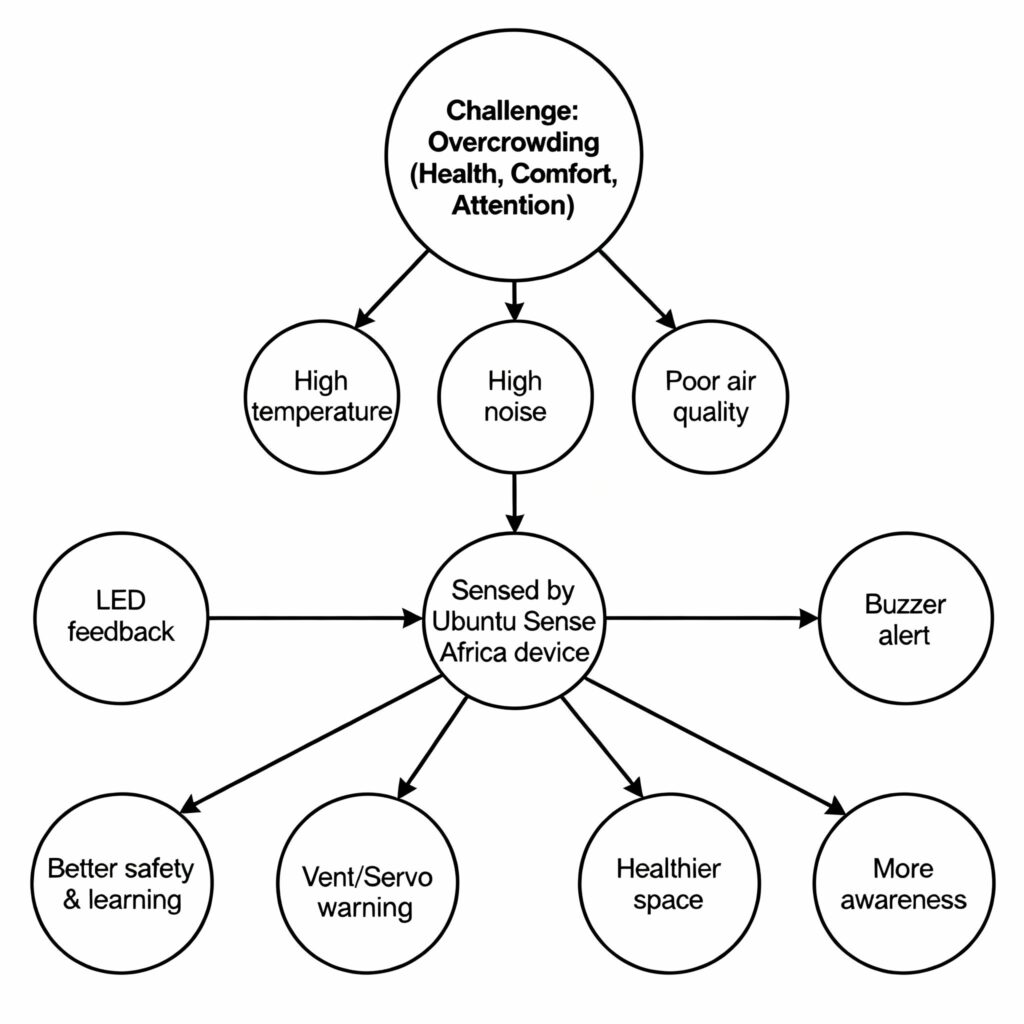
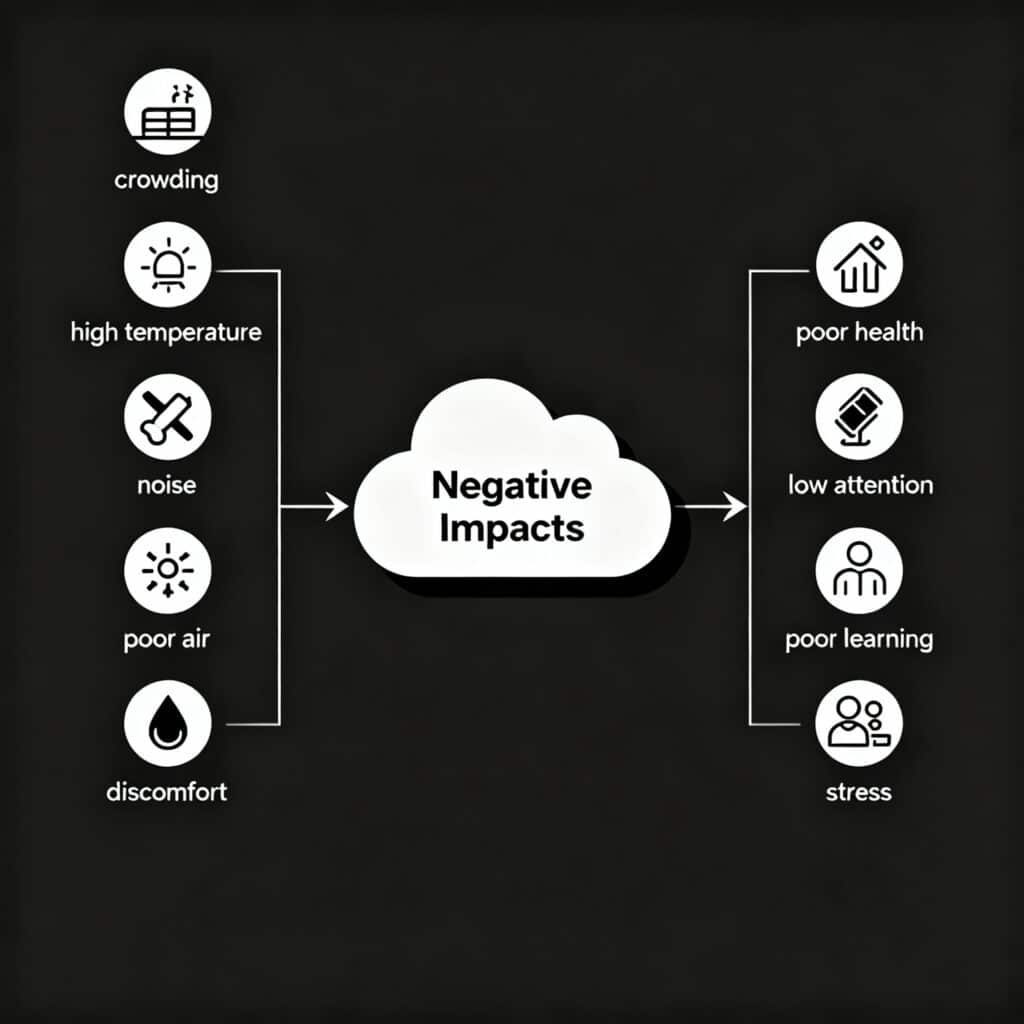
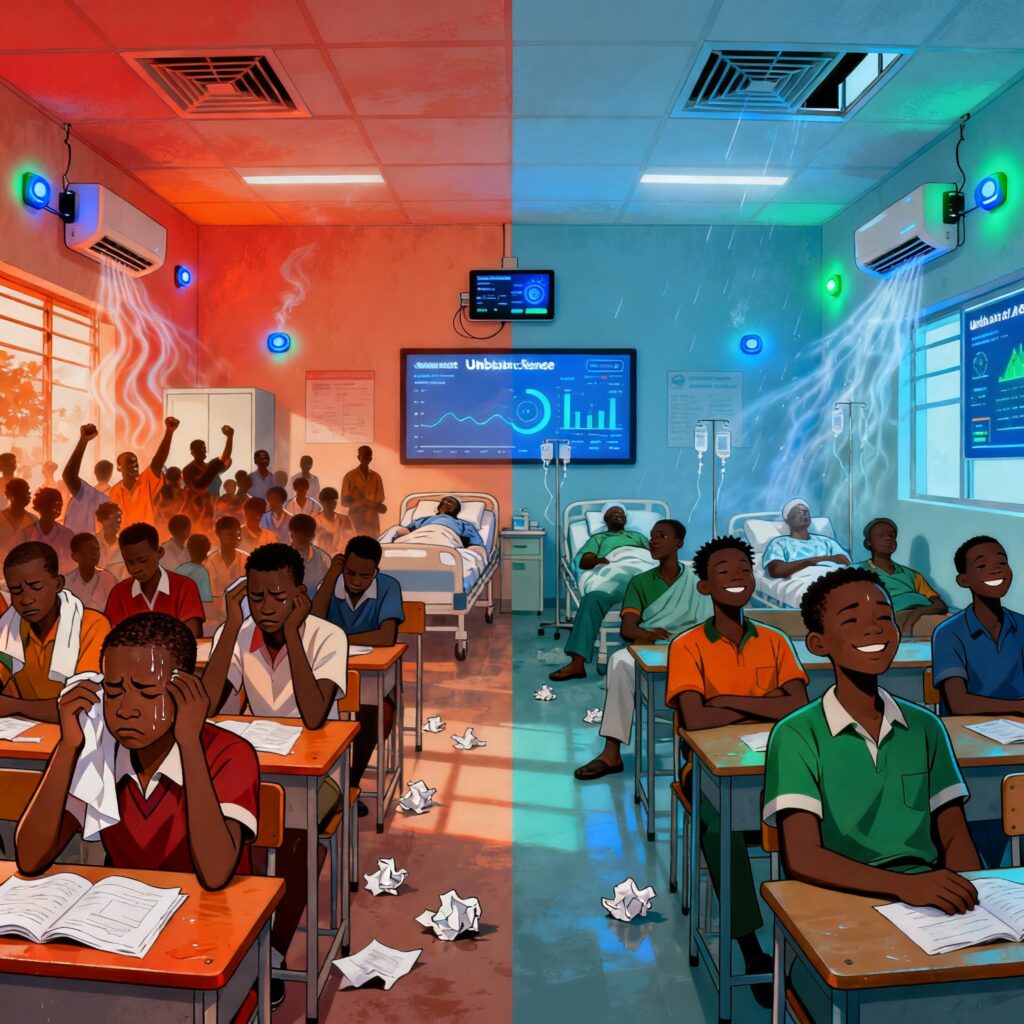
Schematics
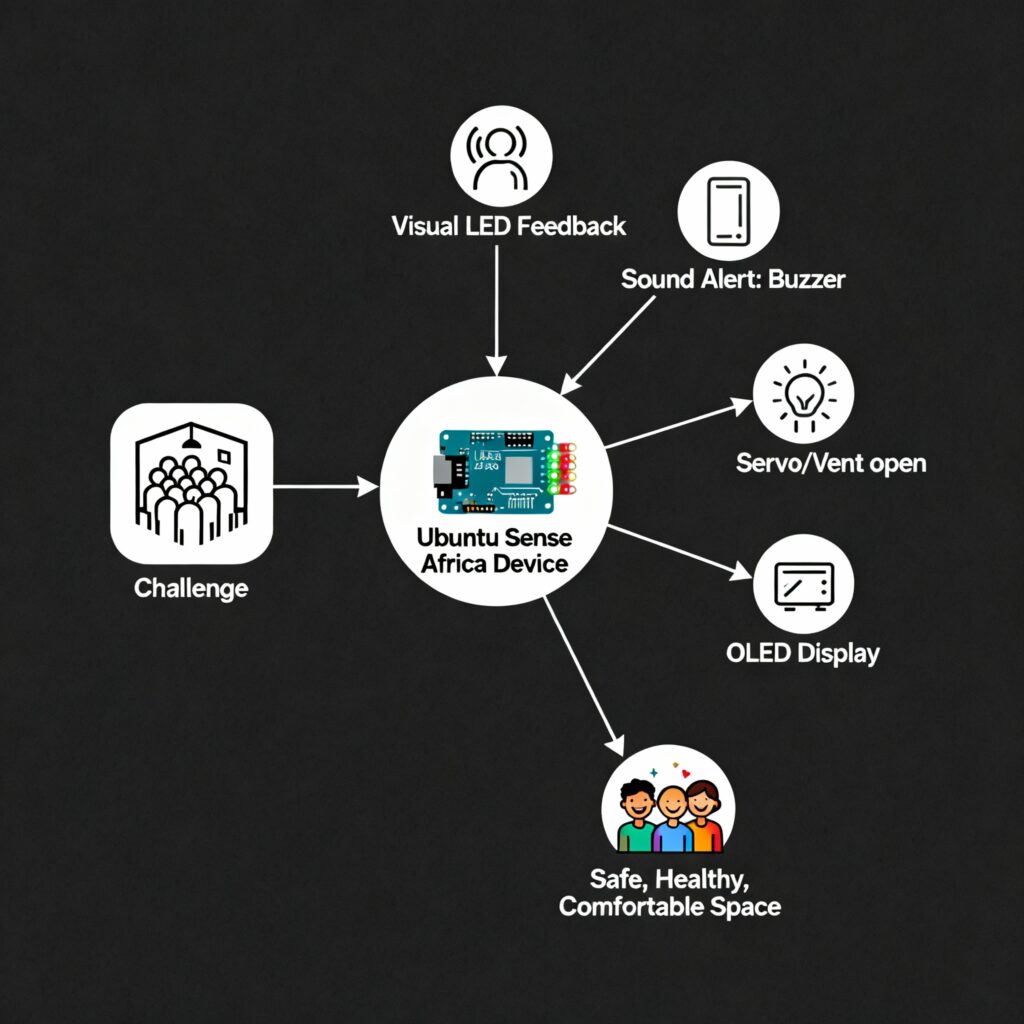
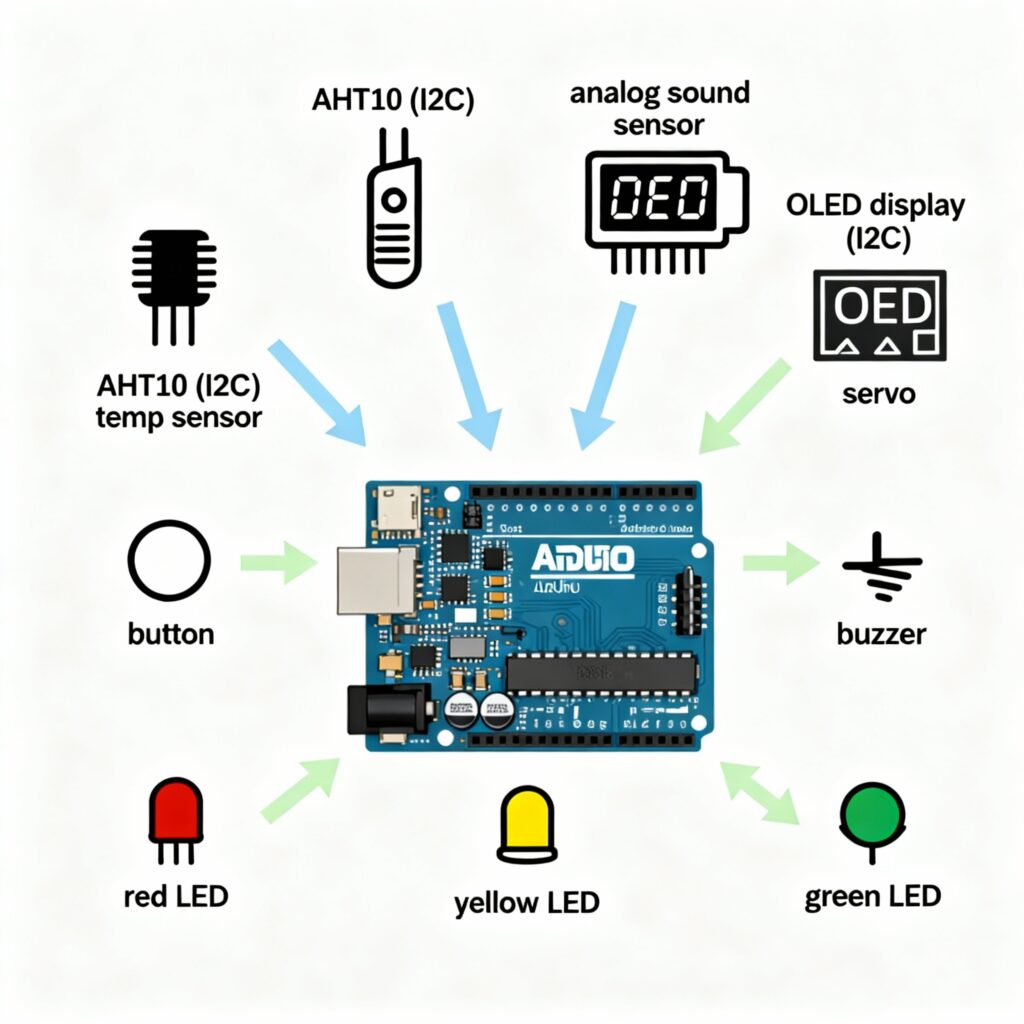
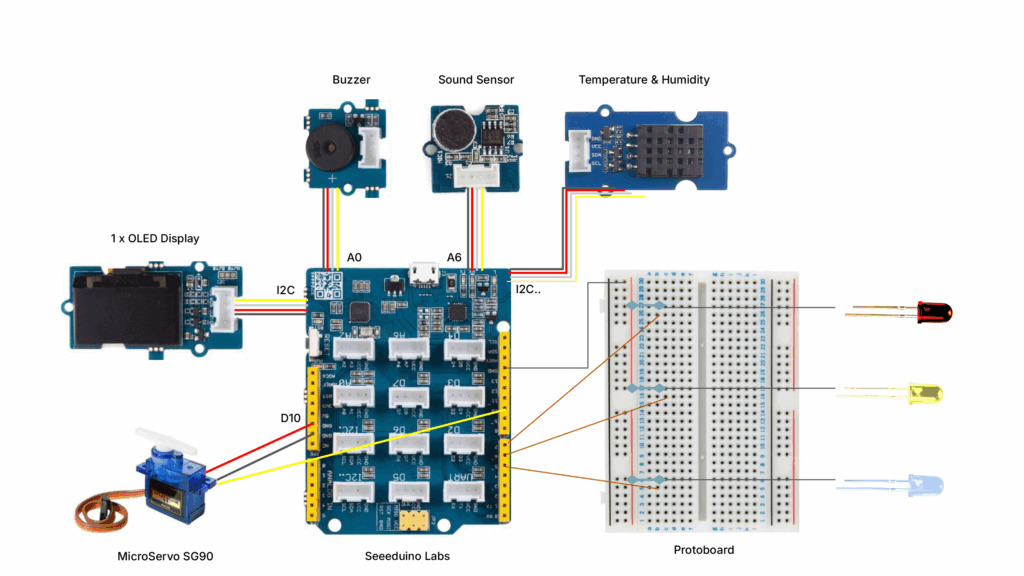
- Temperature sensor: Plugs into Arduino power, ground, and two labeled pins for data (A4 & A5).
- Sound sensor: One wire to power, one to ground, one to A6 for sound reading.
- LEDs (green, yellow, red): Each connects from a numbered pin (5, 6, 7) through a resistor, then to ground.
- Buzzer: Connects from A0 to ground.
- Servo motor: Signal to pin 10, plus power and ground.
- OLED display: Shares power and the same data pins (A4 & A5) with the temperature sensor.
All grounds meet together. Each “signal” wire goes to its labeled Arduino pin. Power comes from 5V or 3.3V on the Arduino.
Arduino System Sketch
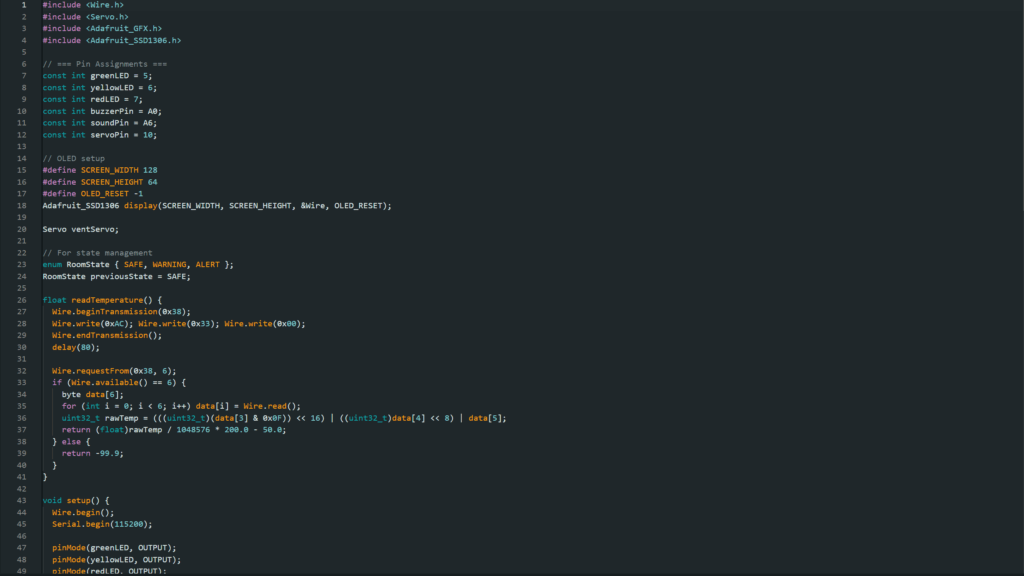


Prototype
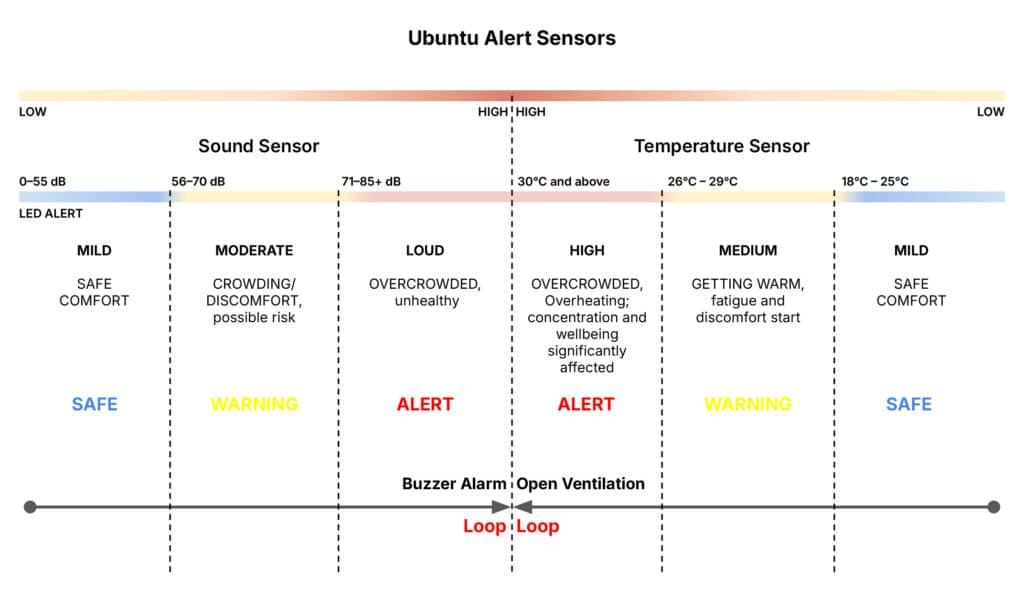
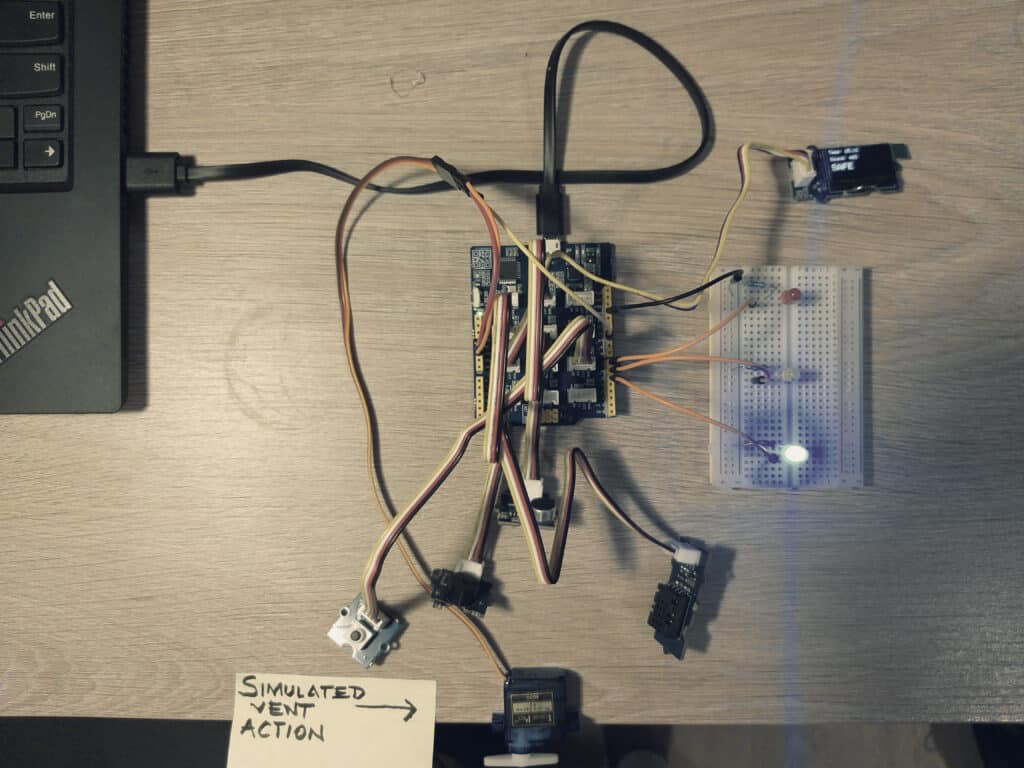
When Temp ≤ 25°C and Sound ≤ 300
→ SAFE: Blue LED lights up, vent stays closed.
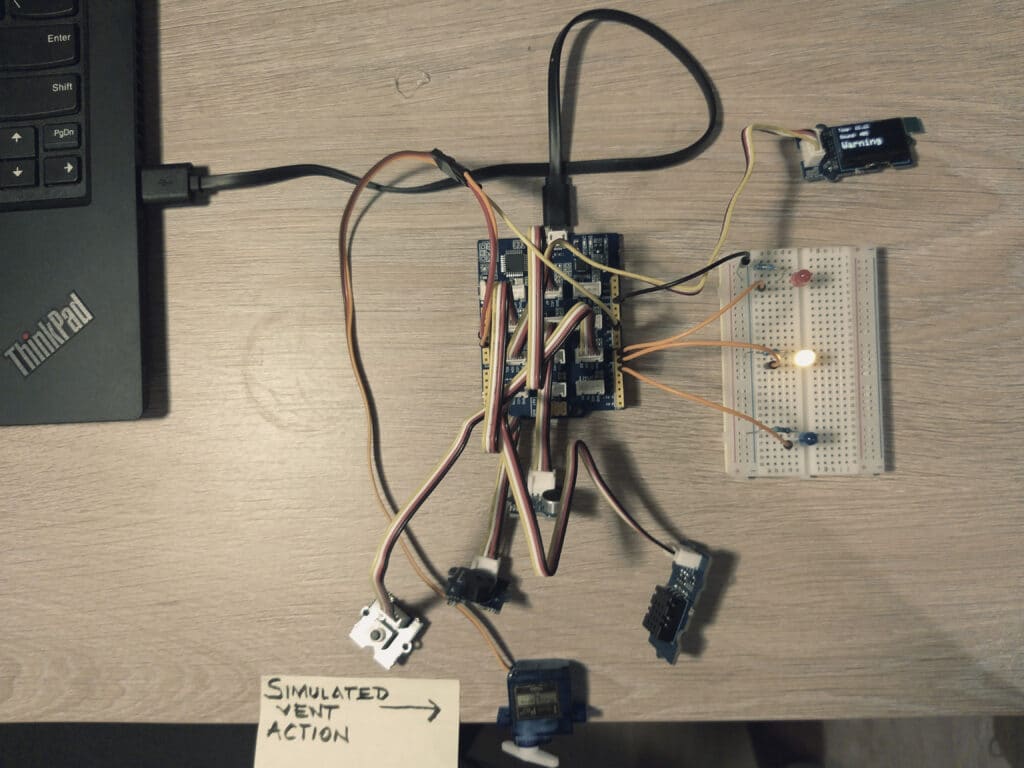
Possible Risk – Mild dB Sound Alert,
When Temp > 25°C or Sound > 300
→ WARNING: Yellow LED, vent partly opens.
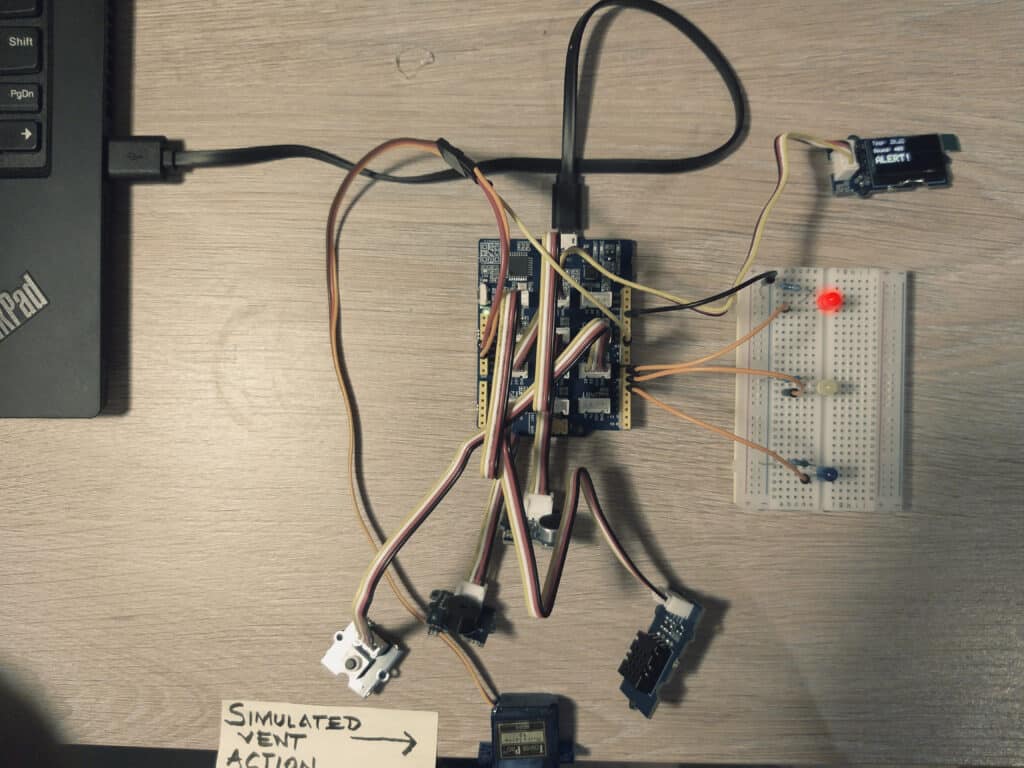
Risk Alert and Vent fully opened
When Temp > 26°C or Sound > 400
→ ALERT: Red LED, buzzer sounds, vent fully opens.
Future Prospects – What Next?
Now that the system senses temperature and sound to signal safe, warning, or alert states, future work can explore adding more sensors (like air quality and occupancy), integrating wireless data logging, and developing smarter ventilation controls. Experimenting with AI to predict crowding trends or discomfort before they peak could transform these reactive signals into proactive comfort management making learning and healing spaces truly responsive and caring.

